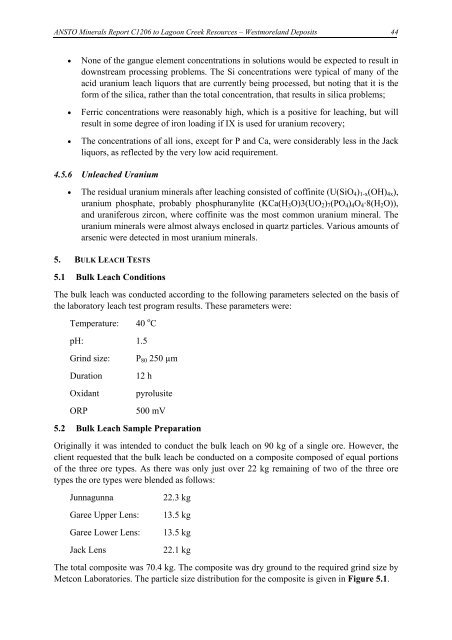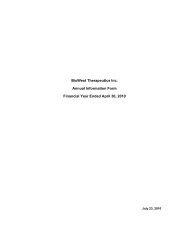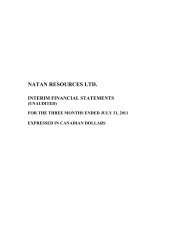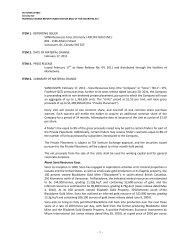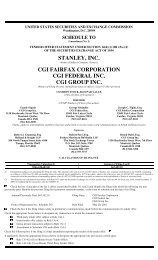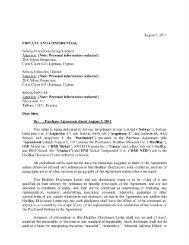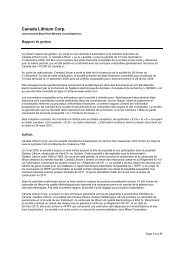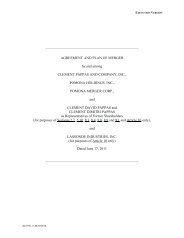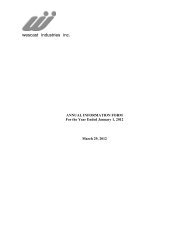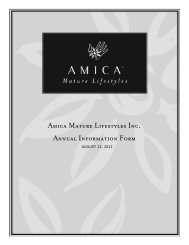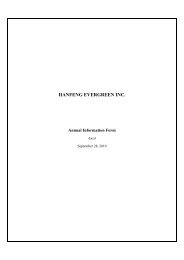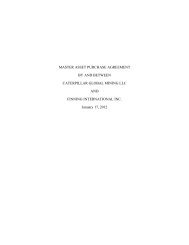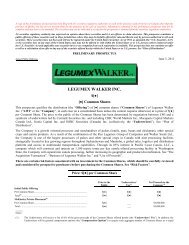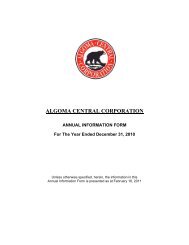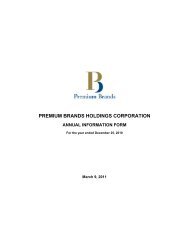Laterite Leach Tests
Laterite Leach Tests
Laterite Leach Tests
You also want an ePaper? Increase the reach of your titles
YUMPU automatically turns print PDFs into web optimized ePapers that Google loves.
ANSTO Minerals Report C1206 to Lagoon Creek Resources – Westmoreland Deposits<br />
• None of the gangue element concentrations in solutions would be expected to result in<br />
downstream processing problems. The Si concentrations were typical of many of the<br />
acid uranium leach liquors that are currently being processed, but noting that it is the<br />
form of the silica, rather than the total concentration, that results in silica problems;<br />
• Ferric concentrations were reasonably high, which is a positive for leaching, but will<br />
result in some degree of iron loading if IX is used for uranium recovery;<br />
• The concentrations of all ions, except for P and Ca, were considerably less in the Jack<br />
liquors, as reflected by the very low acid requirement.<br />
4.5.6 Unleached Uranium<br />
• The residual uranium minerals after leaching consisted of coffinite (U(SiO4)1-x(OH)4x),<br />
uranium phosphate, probably phosphuranylite (KCa(H3O)3(UO2)7(PO4)4O4·8(H2O)),<br />
and uraniferous zircon, where coffinite was the most common uranium mineral. The<br />
uranium minerals were almost always enclosed in quartz particles. Various amounts of<br />
arsenic were detected in most uranium minerals.<br />
5. BULK LEACH TESTS<br />
5.1 Bulk <strong>Leach</strong> Conditions<br />
The bulk leach was conducted according to the following parameters selected on the basis of<br />
the laboratory leach test program results. These parameters were:<br />
Temperature: 40 o C<br />
pH: 1.5<br />
Grind size: P80 250 µm<br />
Duration 12 h<br />
Oxidant pyrolusite<br />
ORP 500 mV<br />
5.2 Bulk <strong>Leach</strong> Sample Preparation<br />
Originally it was intended to conduct the bulk leach on 90 kg of a single ore. However, the<br />
client requested that the bulk leach be conducted on a composite composed of equal portions<br />
of the three ore types. As there was only just over 22 kg remaining of two of the three ore<br />
types the ore types were blended as follows:<br />
Junnagunna 22.3 kg<br />
Garee Upper Lens: 13.5 kg<br />
Garee Lower Lens: 13.5 kg<br />
Jack Lens 22.1 kg<br />
The total composite was 70.4 kg. The composite was dry ground to the required grind size by<br />
Metcon Laboratories. The particle size distribution for the composite is given in Figure 5.1.<br />
44


